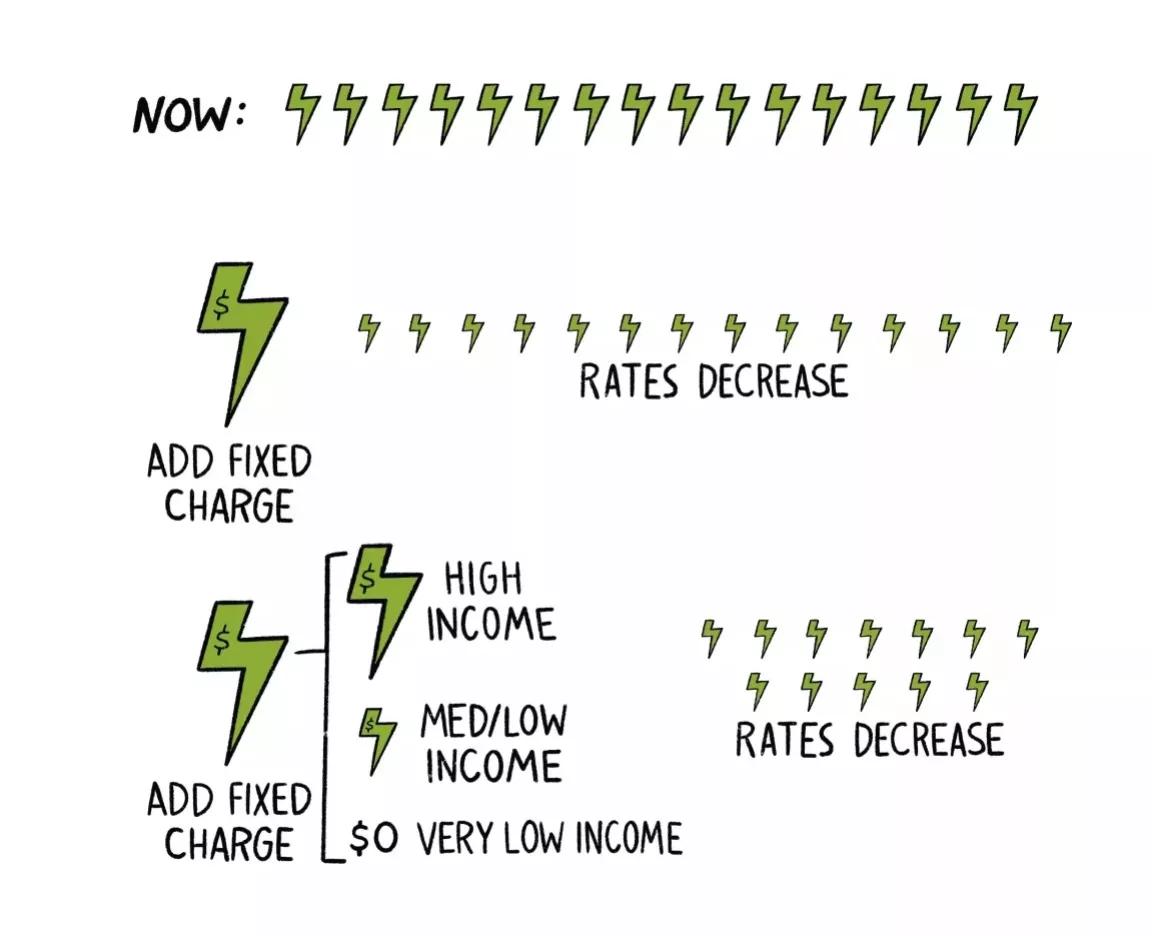CA Electric Rates Should Support Equity and Climate Goals
The California Public Utilities Commission has started a process to better align electric rates with the state’s climate and equity goals.

Robert So/Pexels
Californians pay some of the highest electric rates in the country. And over the next decade, rates are expected to increase due to rising wildfire and infrastructure costs, even as cheap renewables like solar and wind come on the grid. This could make it harder for lower income residents to pay their energy bills at a time when natural gas prices are increasingly volatile. High electricity prices also discourage customers from electrifying their homes and vehicles, threatening California’s climate progress.
Under Assembly Bill 205, the California Public Utilities Commission (CPUC) has started a process to better align electric rates with the state’s climate and equity goals. Critically, the CPUC will authorize guidelines for default residential rates to include an “income-based fixed charge.” Income-based fixed charges have the potential to make electric bills more equitable and encourage new electricity uses such as switching to an electric car or efficient electric space heating (and away from burning fossil fuels).
What are fixed charges?
Electric bills generally have two main components. Volumetric charges are charges for each unit of energy used, while fixed charges are the same each month and cover the fixed costs of maintaining the grid (e.g. wires and poles). For example, Sacramento Municipal Utility District (SMUD) charges residential customers between 11 and 32 cents per kilowatt hour (kWh) of energy use, depending on the time of day, and also collects a $23 "System Infrastructure Fixed Charge" each month.
Most customers at investor-owned utilities like Southern California Edison (SCE) or Pacific Gas & Electric (PG&E) pay very low fixed charges. As a result, the majority of residents’ monthly electricity bills come from increasingly high volumetric (usage) charges, with only a few rates options. These choices include time-of-use rates which moderately incentivize electricity use at off-peak times when power is cheaper to provide.
Environmental advocates, including NRDC, have historically opposed fixed charges and supported higher volumetric charges to incentivize energy efficiency. Back when the grid was mostly powered by polluting resources, encouraging conservation was a primary goal of rate design.
Today, California's grid is increasingly powered by renewables that produce cheap and clean electricity. Using this clean energy instead of polluting alternatives is necessary to decarbonize the economy, and the state has committed to electrifying millions of homes and vehicles to reach net zero carbon emissions by 2045. Yet California's volumetric rates have gotten so high that they risk discouraging these beneficial electrification measures. Electric rates must be low enough to encourage building and transportation electrification, while still covering the costs of generating electricity and operating the grid.
Fixed charges have also been criticized as inequitable because they raise bills for lower-usage customers, who are thought to be lower income (though this is not always the case). This is particularly concerning given that low-income Californians already pay a greater share of their income on electricity than other customers.
Why income-based fixed charges?
Income-based fixed charges have the potential to address both problems. Customers will pay a fixed charge each month based on their income, which will be broken down by three or more tiers, as instructed by Assembly Bill 205. The CPUC is currently working with stakeholders to determine what these tiers and income cutoffs should be, as well as the amount of fixed charge at each income level. The law requires that lower-income residents see bill savings under the new rate structure. Designed well, the new charges should lower volumetric electric rates and progressively distribute system costs to higher-income customers.
Stakeholder proposals for this new rate structure are due in April. The CPUC will publicly vet these proposals and finalize changes to rates by summer 2024. The utilities will then update their systems to implement income-based fixed charges in residential rates.
For this reform to support climate and equity goals, design details are critical. The new fixed charges must cover enough costs to significantly lower usage-based rates, while the income tiers and associated charges must more equitability distribute who pays. Done right, these changes would make electricity more affordable for those least able to pay, and empower all residents to transition to clean electric cars and appliances.












